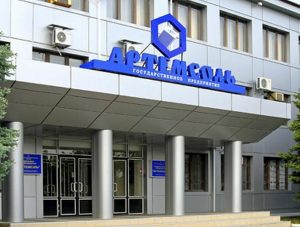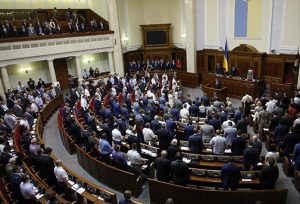
Since the beginning of the new 2020/2021 marketing year (MY, July-June) and as of December 4, Ukraine has exported 22.12 million tonnes of cereals and legumes, which is 3.4 million tonnes less than on the same date last MY.
According to the information and analytical portal of the agro-industrial complex of Ukraine, 12.02 million tonnes of wheat (-1.6 million tonnes), 3.71 million tonnes of barley (+0.2 million tonnes) and 6.03 million tonnes of corn (-2.1 million tonnes) have been exported to date.
As of December 4 of this year, 70,300 tonnes of flour were also exported.
As reported, Ukraine exported a record 57.2 million tonnes of grains, legumes and flour in 2019/2020 MY, which is 13.5% more than in the previous MY.

The State Automobile Roads Agency of Ukraine (Ukravtodor) saved about UAH 11.8 billion of budget funds due to the examination of repair projects, Head of Ukravtodor Oleksandr Kubrakov said during the “Network: Forum of Road Industry” in Kyiv on Wednesday.
“Due to the examination, the decrease in the estimated cost of road repair projects amounted to an average of 7% or 8%. In absolute terms, it is almost UAH 12 billion,” he said.
According to Kubrakov, in 2020, for the first time in the history of road construction in Ukraine, 100% of repair facilities, including current average repairs, undergo an independent examination. Previously, no more than 25% of all facilities were examined.
He also said that the repairs have been finished at the moment on 3,900 kilometers of national roads, and 85 artificial structures have been repaired. At the same time, the average cost of one kilometer of the road in 2020 is UAH 20.6 million, which is UAH 4.5 million cheaper year-over-year.
According to Kubrakov, in 2020, the focus is on the quality of roads, not quantity. Therefore, some 90% of the projects in 2020 were equipped with a road base laying that ensures the durability of the road surface.
In addition, in 2020, the volumes of lighting devices (619 kilometers versus 78.8 kilometers in 2019), barrier fencing (515,000 linear meters against 263,000 linear meters in 2019), as well as sidewalks (206,000 linear meters against 43,500 linear meters in 2019).
In addition, the savings in 2020 auctions rose to 7.8% (the average savings over the past five years is 6.2%).

The state enterprise Artyomsol (Donetsk region) in January-November 2020 produced more than 1.03 million tonnes of salt, which is 43.8% less than in the same period last year, the company has told Interfax-Ukraine.
According to a statement on the website of the state-owned enterprise, in November 2020 Artyomsol produced 132,900 tonnes of salt, the highest figure in the 11 months of this year.
“Now we are in a difficult situation, a number of problems have been accumulating at the enterprise for years. In addition to external factors, Artyomsol was burdened with unfavorable and dubious contracts. We are reviewing our contractual relations and applying the principle of openness. A contract campaign has been announced on our website, everyone can apply for the intention to cooperate. Unfortunately, not all partners with whom we have completed cooperation on contracts agree with this decision,” head of the enterprise Viktoria Lutsenko said.
She also pointed out that the enterprise is developing a comprehensive anti-crisis program, which includes increasing the profitability of the enterprise, modernizing production, raising workers’ wages.
Artyomsol is one of the largest enterprises for the extraction and sale of sodium chloride (NaCl) in Central and Eastern Europe. The production facilities of Artyomsol are located in Soledar, Donetsk region. The company exports its products to 15 countries of the world.

The Verkhovna Rada has reinstated criminal liability for declaring incomplete data and failure to submit a declaration, in particular, introducing a restriction of freedom for up to two years, if the declared information differs from the reliable one in the amount of more than 4,000 living wages for able-bodied persons.
The corresponding bill, No. 4460-d, was supported as a basis by 287 and 289 MPs in general at a plenary session on Friday.
The said bill proposes to amend Article 1726 of the Code of Administrative Offenses of Ukraine (CAO), which clarify the subjects of this offense.
Also, these changes allow to impose administrative penalties under this article in the event that the information in the declaration of the person authorized to perform the functions of the state or local government will differ from the reliable ones in the amount of 100 to 500 living wages for able-bodied persons, and not from 100 to 250 living wages for able-bodied persons, as indicated in the current version.
The amendments proposed in the Code of Administrative Offenses, as a result, make it possible to raise the threshold of criminal liability for declaring false information.
The authors of the draft law propose to exclude Article 366-1 (declaration of inaccurate information) from the Criminal Code of Ukraine, but to supplement the Code with a new Article 366-2 (declaration of inaccurate information).
This article establishes criminal liability in the event that the declared information differs from reliable information in the amount of 500 to 4,000 living wages for able-bodied persons in form of a fine from 2,500 to 3,000 non-taxable minimum incomes of citizens or public works from 150 to 240 hours with deprivation of the right to hold certain positions or engage in certain activities for up to three years under the first part of this article.
In the event that such information differs from reliable information in the amount of more than 4,000 living wages for able-bodied persons, liability is provided in form of a fine from 3,000 to 5,000 non-taxable minimum incomes of citizens or public works from 150 to 240 hours, or restriction of freedom for a period up to two years with the deprivation of the right to hold certain positions or engage in certain activities for up to three years under part two of this article.